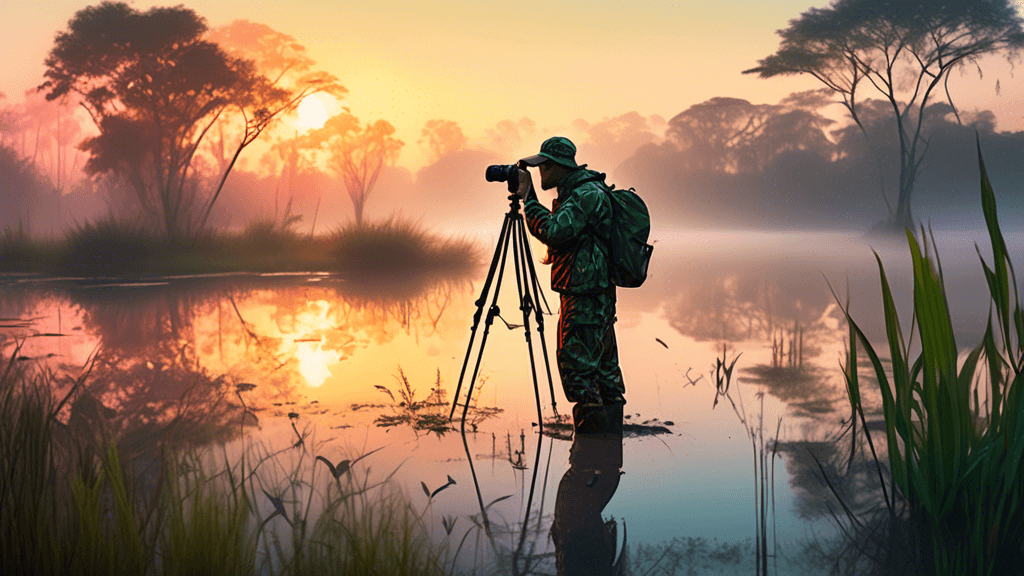
Capturing Conservation: Wetland Photography and Its Role in Ecosystem Preservation
Share
The Art and Impact of Wetland Photography
Have you ever immersed yourself in the ethereal beauty of wetlands through a photograph and found yourself transported to a serene, almost otherworldly scene? Wetland photography is not only an art form but a poignant medium that bridges the gap between nature's quiet corners and the bustling world most of us inhabit. This blog delves into how capturing images of these vitally important ecosystems plays a crucial role in their conservation and in fostering a greater appreciation of our natural world.
Understanding Wetlands and Their Ecological Significance
Before exploring the interplay between photography and conservation, it is essential to grasp what wetlands are and why they matter. Wetlands, which include marshes, peatlands, mudflats, mires, ponds, and swamps, are areas where water saturates the land, either seasonally or permanently. Their ecological and hydrological functions are invaluable as they:
- Provide habitat for a diverse array of wildlife,
- Act as natural water purifiers,
- Buffer inland areas from coastal flooding, and
- Store carbon, thus playing a role in climate control.
Despite their importance, wetlands are among the most threatened ecosystems globally, primarily due to human activities such as agriculture, urban development, and pollution. This makes their conservation a critical priority.
The Lens of Conservation: Photography as a Tool for Environmental Advocacy
Wetland photography transcends traditional boundaries of art, serving as an effective tool for environmental conservation. By presenting compelling images of these landscapes and their inhabitants, photographers can evoke emotional responses that written reports or statistical data often fail to achieve. But how exactly does photography impact the conservation of wetlands?
Creating Emotional Connections
Photographs have the unique ability to capture and convey the beauty and fragility of wetlands through visuals that strike an emotional chord. Notable wildlife photographer and conservationist, Joel Sartore, once said, People only save what they love. This statement underscores the power of photography in making distant environmental issues feel personal and urgent.
Educating the Public
High-quality photographs, accompanied by educational narratives, can significantly enhance public awareness about the critical roles wetlands play in biodiversity and climate regulation. These images educate people about the ecosystem services wetlands provide and the threats they face, inspiring more community involvement in conservation efforts.
Influencing Policy
Photography can also be a persuasive tool in advocacy, used to influence environmental policies. Images documenting the degradation of wetlands or the success stories of restored wetland areas can be powerful in swaying public opinion and motivating policymakers to act. Conservation photographers have, in many instances, played pivotal roles in securing environmental protections through their impactful images.
Strategies for Aspiring Conservation Photographers
If you are a photographer passionate about conservation, here are some strategies to maximize the impact of your work:
- Foster relationships with conservation organizations who might benefit from your photography.
- Educate yourself about the ecology and current threats to wetland areas to inform your photography and storytelling.
- Engage with your audience through social media platforms and photo exhibitions to raise awareness.
- Always adhere to ethical photography practices to avoid disturbing the wildlife or habitats you aim to protect.
Conclusion: A Picture Can Indeed Save a Planet
Through the lens of a camera, wetland photography has the power to inform, inspire, and invoke action. It bridges the gap between science and the public, translating ecological data into a visual language that resonates deeply with human emotions. As environmental stewards, photographers hold a remarkable tool in their hands—where each shutter click can contribute to the monumental task of ecosystem preservation.
Are you ready to make a difference with your camera? Embrace the challenge and capture the fleeting moments of beauty and urgency in our world's wetlands.





